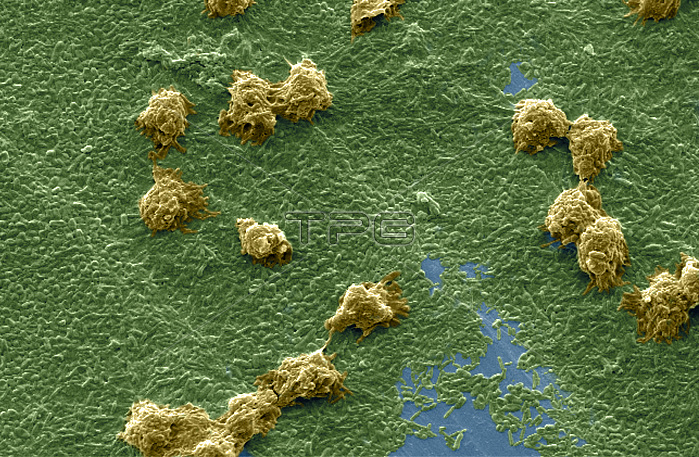
Color-enhanced Scanning Electron Micrograph (SEM) showing ultrastructural morphology exhibited by a number of Vermamoeba vermiformis (Hartmannella) amoebae trophozoites. As part of a study to determine whether Legionella pneumophila bacteria can colonize and grow in biofilms with or without the presence of V. vermiformis, here these protozoa were situated atop a base biofilm composed of Pseudomonas aeruginosa, Klebsiella pneumoniae and a Flavobacterium sp. bacteria. Note that the amoebae were grazing upon these bacteria which reveals the scoured stainless steel coupon surface. Vermamoeba vermiformis a free-living amoeba (FLA), is widespread in nature and has been isolated from soil, freshwater, air, and a variety of engineered water systems. Two distinct life cycle forms are known for Vermamoeba vermiformis, the trophozoite, an active feeding cell that also multiplies, and cysts, which are inactive dormant cells. V. vermiformis has direct and indirect public health significance. The indirect public health significance of the organism is related to its role as a host for Legionella pneumophila, the causative agent of Legionnaires' disease. Magnification: 1155x.
| px | px | dpi | = | cm | x | cm | = | MB |
Details
Creative#:
TOP22230699
Source:
達志影像
Authorization Type:
RM
Release Information:
須由TPG 完整授權
Model Release:
N/A
Property Release:
No
Right to Privacy:
No
Same folder images:

 Loading
Loading